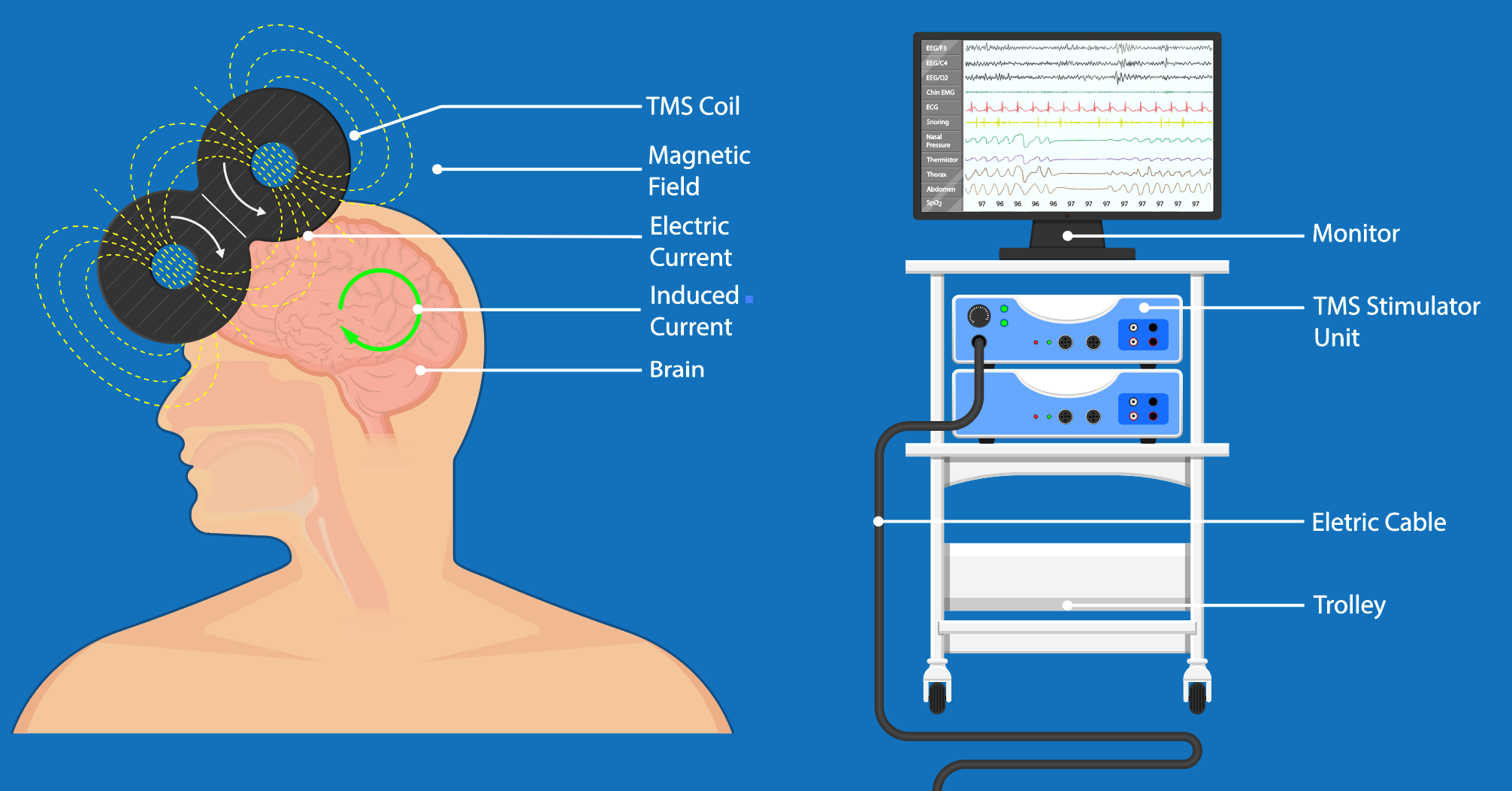TMS Therapy
OVERVIEW
We're proud to offer Transcranial Magnetic Stimulation (TMS) as one of our leading-edge treatments. TMS is a non-invasive procedure designed to stimulate specific regions of the brain using magnetic fields. It has emerged as a promising solution for patients with depression, especially for those who haven't found relief from traditional therapies.
TMS is FDA-approved, safe, and many patients experience significant symptom reduction or even remission after undergoing TMS treatments. At LAOP, our dedicated team ensures that you receive personalized care, guiding you through each step of the TMS journey towards improved mental wellness.

How TMS Works
TMS is different than medication. Where medication alters the chemistry of the brain, TMS seeks to treat the actual brain circuits involved in the condition.
In a TMS treatment, we place an electric pulse generator against the scalp near the forehead. The repetitive TMS machine (rTMS) emits painless, magnetic pulses that stimulate the nerve cells in the region of the brain associated with the condition. For example, an area of the frontal cortex in patients with depression.
What TMS Treats
In the US, TMS is approved by the U.S. Food and Drug Administration (FDA) to treat three conditions:
- Major depressive disorder
- Obsessive-compulsive disorder
- Migraine
It’s also approved to help people to quit smoking.


How Effective is TMS?
Various studies show that at least 60% of people with depression - who haven’t benefited from medication - experience a ‘clinically meaningful response’ with TMS.
For example, in a study of 664 patients with anxious depression, nearly two thirds (65.5%) achieved a successful outcome.
Such success rates have led to TMS becoming the first non-drug, non-invasive treatment to be approved by the FDA.
This does not mean that symptoms are cured. As with lots of mood-disorder treatments, there is a high recurrence rate. But most TMS patients feel better for many months following treatments and opt to come back for further treatment as and when it’s needed.
The TMS Treatment Timeline
TMS treatment varies, but typically takes several weeks at three to five sessions per week. Each session can last between 20 and 50 minutes depending on the device and clinical protocol. FDA-approved protocols for depression differ - they’re every day for six weeks with a total of 30 sessions.
First TMS Treatment
The first treatment can take longer than the rest - up to an hour or so. This is because we need to find the best area to place the magnets and the proper strength needed.
Before the doctor begins this process, called ‘mapping’, patients will be taken to our treatment room where they will relax in a reclining chair and given a set of earplugs to wear during the procedure.
After mapping is complete, the doctor places the rTMS machine against the head. The machine is then turned on and off repeatedly, during which time the patient will hear clicking sounds and feel a gentle tapping sensation. This causes no pain to the patient.
Once mapping is completed, and dosage determined, treatment proceeds as normal.
Subsequent TMS Treatments
Each session follows a similar pattern as before - a comfy chair, ear plugs and a magnetic coil placed around the head followed by clicking sounds and tapping on the forehead as the machine pulses. Again, no pain is caused.
Patients are awake and alert at all times. Once the treatment is completed, the patient can return to normal daily activities such as driving and working.
Expected Outcomes of
TMS Treatment
If treatment is effective, patients should expect depression symptoms to improve or even be completely removed after a few weeks.
As noted earlier, this doesn’t mean symptoms are permanently cured - not enough is known about the future impact TMS can have on depression and mood disorders. However, if patients improve with treatment but then experience further episodes further down the line, treatment can be repeated on an ongoing basis.

